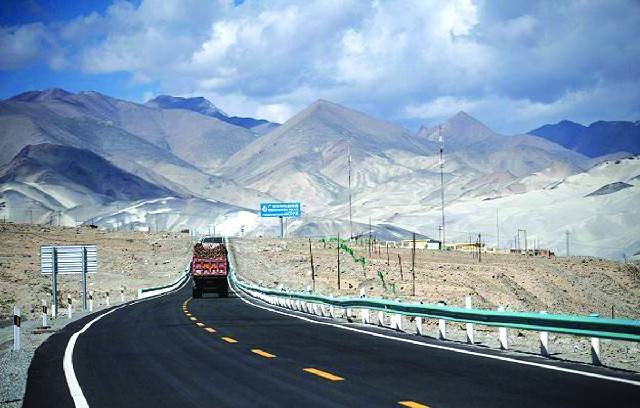
Following weeks of uproar, the parliament finally approved the federal budget for FY 2021-22 with a quantum of Rs. 8.4 trillion. A staggeringly large part of this, around 95%, would be served to fulfill the current obligations of the government while the remaining Rs. 964 billion are earmarked for development – of which Rs. 900 billion is set aside for Federal PSDP. The Federal PSDP at Rs. 900 billion is nearly one-fourth of the Rs. 3.5 trillion transferred to the provinces as their legitimate share of revenues under the 18th Amendment. With the Rs. 3.5 trillion transferred by the federal government, their indigenous sources and the some deficit financing, the provinces have been able to budget expenditures to the tune of: Punjab – Rs. 2.653 trillion; Khyber-Pakhtunkhwa – Rs. 1.118 trillion; Sindh – Rs. 1.4 trillion, and; Balochistan – Rs. 584 billion.
Currently estimated at 3.94%, the growth – while passionately disputed by the parliamentary opposition – is significant and somewhat meaningful. It has brought meaning to the policy change of chasing growth instead of stabilization. The government had adopted the course of easing up certain sectors of the economy by lifting regulatory constraints and providing certain tax and non-tax reliefs as that happened in the construction industry during COVID. If not causality, one can certainly establish correlation between the policy reforms and the growth enhancement to 3.94%.

One of the facets of the growth policy is to use development as lever to growth. Economists have long argued now that the point to the national development process is not merely economic growth (which is the increase in the GDP estimate) but economic development, which is a more holistic understanding of improvement in several indicators like health, education, poverty alleviation, etc. However, the argument that I make here is that as far as public spending is concerned, budgetary allocations for development can act as a lever, and in many cases, a multiplier to economic growth. Growth will then push holistic development with itself to higher levels. In the developing world, growth has been sporadic and inconsistent due to policy disturbances and uneven subsidization between sectors and low budgetary allocations to development. And hence growth, even at times when it was available, did not convert into development at the pace at which it could have ensured better lives and livelihoods for large segments of the society.
The FY 2021-22 budget, as expected, may act as a lever to obtain the projected growth rate of 4.8% for FY 2021-22. Whether the economy really will grow by that much is yet to be seen. However, as one would think, the government’s commitment to development, while reflecting an increase from the previous year, is neither substantial nor evenly distributed between its various uses and units of governance. The federal government is spending around 5% of its total budgeted expenditure on development.
In my article on this page last week, I argued for civil service and pension reforms which would ease up the fixed salary and pension obligations of the government to allow it greater room to invest in development, more specifically to improve the health and education infrastructure. The Government of Punjab has earmarked Rs. 560 billion from its budget of Rs. 2.65 trillion for development. That comes out to be roughly around 21% - of this the largest funds will go to the provincial ADP while some funds would trickle down to the districts as the province’s contribution to their ADPs. The Government of KP has put out a budget of Rs. 1.118 trillion of which development will receive Rs.560 billion, which will amount to 33% of the total budget. Sindh and Balochistan with the sizes of their budgets at Rs. 1.4 trillion and Rs. 584 billion will allocate 23.5% and 40.5% of their budgets to development, respectively.
While some development outcomes in the provinces are caused through the Federal PSDP projects being implemented by the provincial governments and under the auspices of the Ehsas program that is financed partly through “other development expenditure, Federal PSDP and the rest under the “transfers and grants to the provinces” head of the current expenditure, the development expenditures of the provinces are a good indicator to assess the government’s commitment to the cause of economic development.
Evaluating the size of the development expenditure on a per person basis can be a good way of looking at how well a certain province is endowed and what development outcomes it can manage with the current level of development investments. The Islamabad Capital Territory is an exception to this rule since the Federal PSDP, while being largely spent to provide a good life to its citizens, cannot be isolated and attributed to Islamabad’s use in particular – since it is utilized to fulfill several other budgetary demands.
With a population of 110 million, Punjab is by far the largest province in terms of headcount. Its development outlay of Rs. 560 billion can be disaggregated to Rs. 5,090 per person. KP’s population of 36 million exposes each of its residents to public development spending of Rs. 10,305. Sindh and Balochistan spend Rs. 6,854 and Rs. 18,230, respectively for each of their citizens on development. Balochistan clearly spends a large part of its budget on development and with a regional equalization plan instrumented through the 18th Amendment, the citizens of Balochistan, the smallest province in terms of the size of the economy today, have nearly 4 times higher development funds per capita compared to the largest provincial economy; Punjab. KP and Sindh lie somewhere in the middle of these development extremes.
If anything, this analysis provides evidence to the argument that development is sporadic, uneven and inconsistent – both between regions and sectors of the economy. The pace at which such development financing is converted into development outcomes may vary and the outcomes obtained in Punjab and Balochistan may come out to be similar – or a case where with four times lesser development funds at its disposal, Punjab may even make the cut to produce better development outcomes through a more efficient state infrastructure and system of governance. However, the case for even subsidization and budgetary allocations will remain a sine qua non.
Currently estimated at 3.94%, the growth – while passionately disputed by the parliamentary opposition – is significant and somewhat meaningful. It has brought meaning to the policy change of chasing growth instead of stabilization. The government had adopted the course of easing up certain sectors of the economy by lifting regulatory constraints and providing certain tax and non-tax reliefs as that happened in the construction industry during COVID. If not causality, one can certainly establish correlation between the policy reforms and the growth enhancement to 3.94%.

One of the facets of the growth policy is to use development as lever to growth. Economists have long argued now that the point to the national development process is not merely economic growth (which is the increase in the GDP estimate) but economic development, which is a more holistic understanding of improvement in several indicators like health, education, poverty alleviation, etc. However, the argument that I make here is that as far as public spending is concerned, budgetary allocations for development can act as a lever, and in many cases, a multiplier to economic growth. Growth will then push holistic development with itself to higher levels. In the developing world, growth has been sporadic and inconsistent due to policy disturbances and uneven subsidization between sectors and low budgetary allocations to development. And hence growth, even at times when it was available, did not convert into development at the pace at which it could have ensured better lives and livelihoods for large segments of the society.
Through the 18th Amendment, the citizens of Balochistan, the smallest province in terms of the size of the economy today, have nearly 4 times higher development funds per capita compared to the largest provincial economy, Punjab
The FY 2021-22 budget, as expected, may act as a lever to obtain the projected growth rate of 4.8% for FY 2021-22. Whether the economy really will grow by that much is yet to be seen. However, as one would think, the government’s commitment to development, while reflecting an increase from the previous year, is neither substantial nor evenly distributed between its various uses and units of governance. The federal government is spending around 5% of its total budgeted expenditure on development.
In my article on this page last week, I argued for civil service and pension reforms which would ease up the fixed salary and pension obligations of the government to allow it greater room to invest in development, more specifically to improve the health and education infrastructure. The Government of Punjab has earmarked Rs. 560 billion from its budget of Rs. 2.65 trillion for development. That comes out to be roughly around 21% - of this the largest funds will go to the provincial ADP while some funds would trickle down to the districts as the province’s contribution to their ADPs. The Government of KP has put out a budget of Rs. 1.118 trillion of which development will receive Rs.560 billion, which will amount to 33% of the total budget. Sindh and Balochistan with the sizes of their budgets at Rs. 1.4 trillion and Rs. 584 billion will allocate 23.5% and 40.5% of their budgets to development, respectively.
While some development outcomes in the provinces are caused through the Federal PSDP projects being implemented by the provincial governments and under the auspices of the Ehsas program that is financed partly through “other development expenditure, Federal PSDP and the rest under the “transfers and grants to the provinces” head of the current expenditure, the development expenditures of the provinces are a good indicator to assess the government’s commitment to the cause of economic development.
Evaluating the size of the development expenditure on a per person basis can be a good way of looking at how well a certain province is endowed and what development outcomes it can manage with the current level of development investments. The Islamabad Capital Territory is an exception to this rule since the Federal PSDP, while being largely spent to provide a good life to its citizens, cannot be isolated and attributed to Islamabad’s use in particular – since it is utilized to fulfill several other budgetary demands.
With a population of 110 million, Punjab is by far the largest province in terms of headcount. Its development outlay of Rs. 560 billion can be disaggregated to Rs. 5,090 per person. KP’s population of 36 million exposes each of its residents to public development spending of Rs. 10,305. Sindh and Balochistan spend Rs. 6,854 and Rs. 18,230, respectively for each of their citizens on development. Balochistan clearly spends a large part of its budget on development and with a regional equalization plan instrumented through the 18th Amendment, the citizens of Balochistan, the smallest province in terms of the size of the economy today, have nearly 4 times higher development funds per capita compared to the largest provincial economy; Punjab. KP and Sindh lie somewhere in the middle of these development extremes.
If anything, this analysis provides evidence to the argument that development is sporadic, uneven and inconsistent – both between regions and sectors of the economy. The pace at which such development financing is converted into development outcomes may vary and the outcomes obtained in Punjab and Balochistan may come out to be similar – or a case where with four times lesser development funds at its disposal, Punjab may even make the cut to produce better development outcomes through a more efficient state infrastructure and system of governance. However, the case for even subsidization and budgetary allocations will remain a sine qua non.

